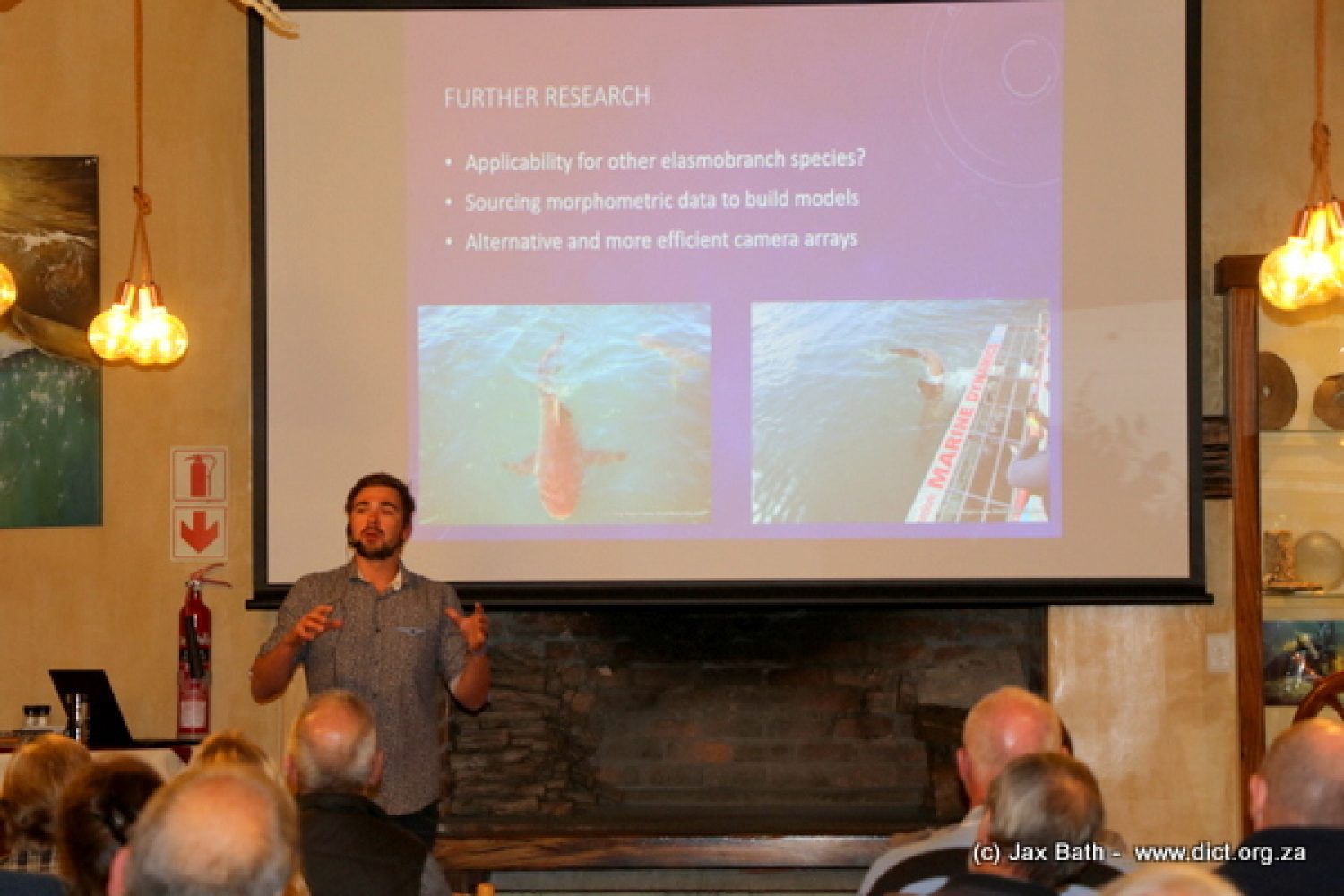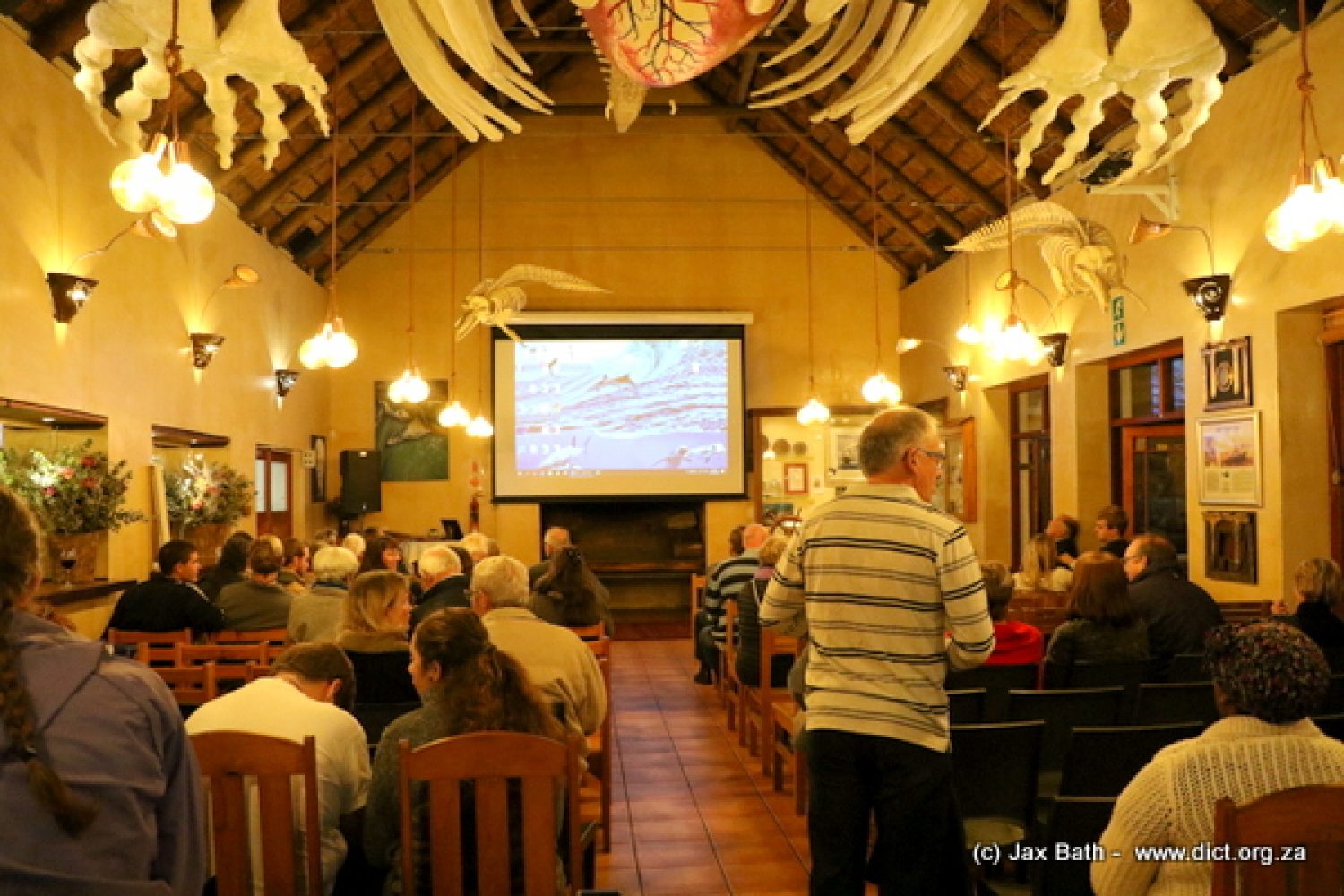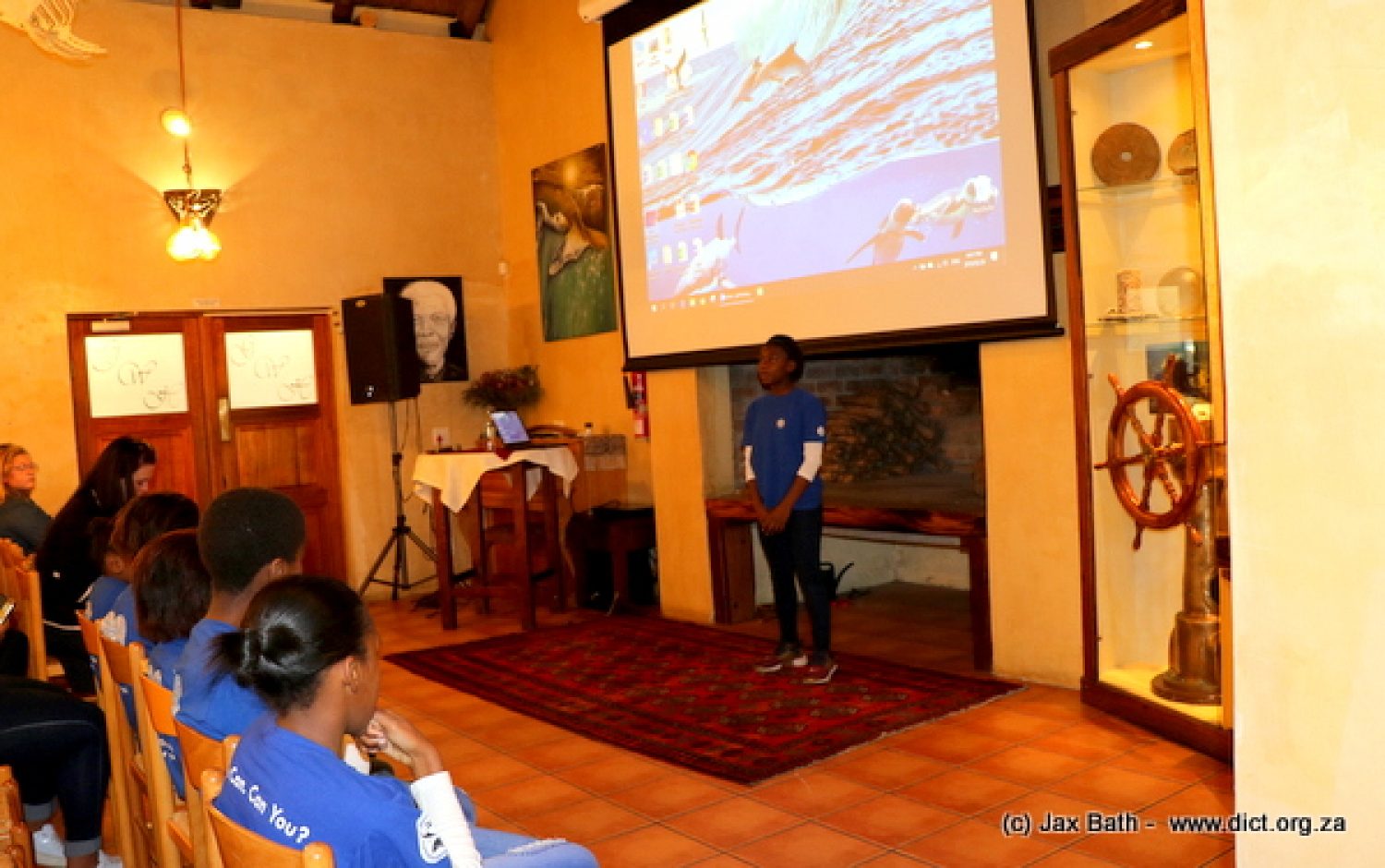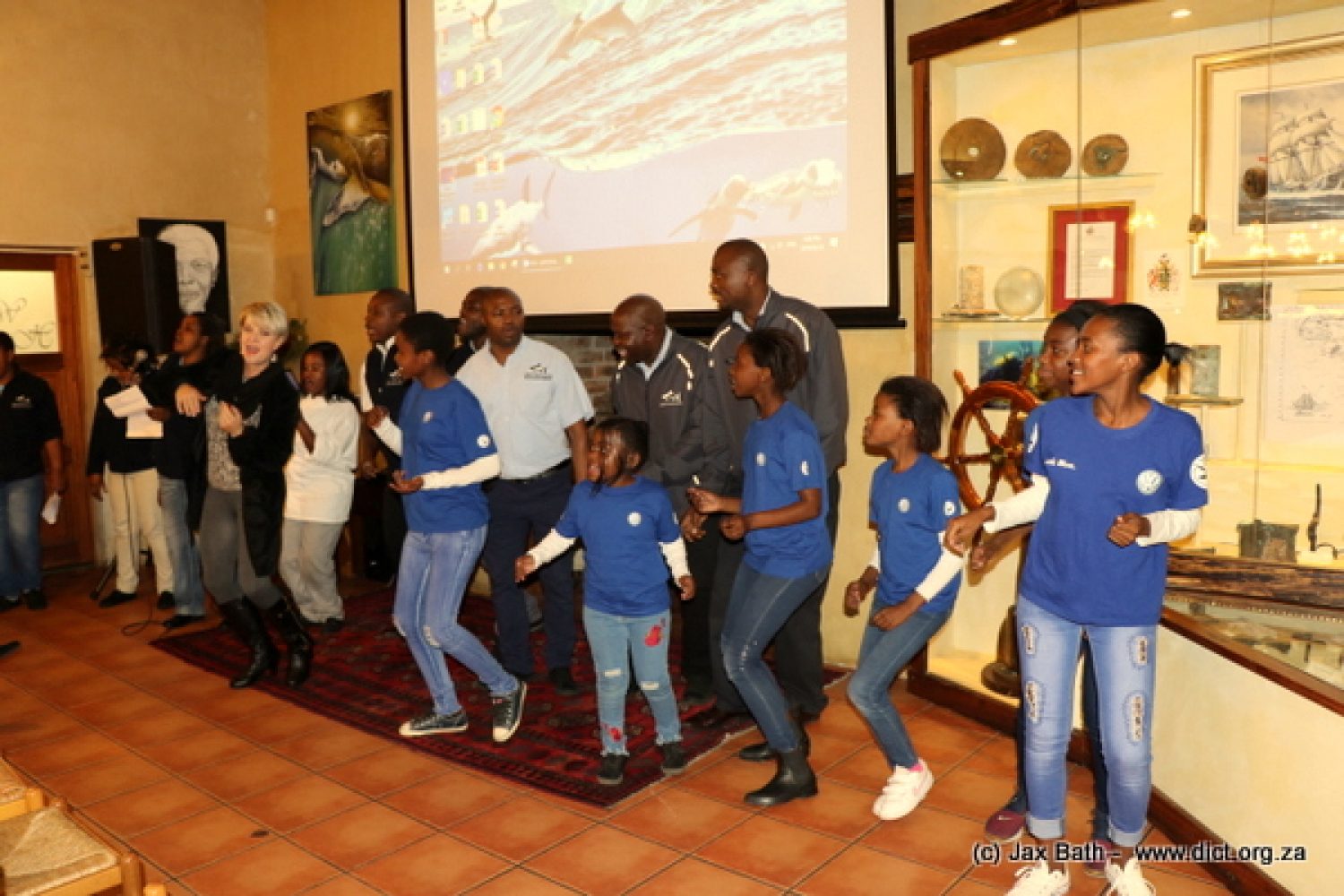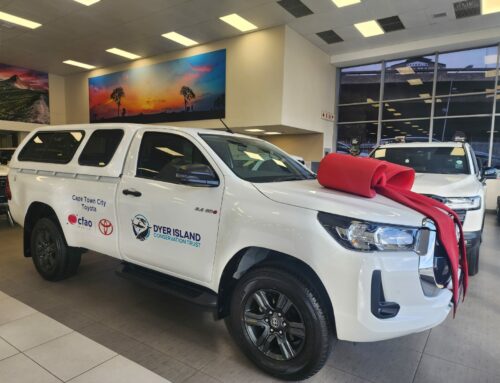June 04, 2018
The latest Marine Dynamics evening started on a positive note with Dyer Island Conservation Trust Environment Educational Programme, better know as the DEEP Blue ambassadors, opening with a short presentation on what this programme means for their education and personal development. The youngest future DEEP ambassador, Munashe Mudenge, just 6 years old introduced the rest of the team with ease. The group thanked their sponsors and Pinkey Ngewu, the educator of the Dyer Island Conservation Trust.
The Great White House management and staff recently took to using their singing talent to start a choir. They have been practicing under the expertise of musician Anza Naude for the last three weeks. This talented team entertained everyone with Margaret Singama – Lady Africa’s: Mama Thembu’s Wedding.
This month’s guest speaker was Marine Dynamics Guiding Biologist Toby Rogers, presenting on his research concerning sharks and laser photogrammetry.
Toby Rogers studied at UK based, Bangor University, where he graduated with a Master’s Degree in Marine Biology in 2016. Toby is the Academic lead of the skills-based Science Internship with the companies’ new venture, Marine Dynamics Academy.
Photogrammetry in simple terms is using still images to collect measurements of free-swimming animals. Non-invasive techniques are strived for in marine biology and the motivation behind Toby’s research was to pinpoint a technique that allows researchers to yield core biological metrics namely, size, sex and stage of sexual maturity, from sharks without having to touch the animals. These core biological metrics can then be used for management authorities when they are implementing conservation policy. Using lasers and cameras to capture measurement data from sharks provides an alternative to catching sharks.
The lasers point onto the flank of the shark, and because the distance between the two lasers is known (10cm) you can use image analysis software to scale your images and collect accurate measurements. However, it doesn’t appear to be as simple as it first might seem. It is not possible to use the software to measure from the tip of the snout to the tip of the caudal, due to the swimming behaviour of the shark. Therefore, you need to find a measurement proxy to try and predict the total length of the shark.
Typically, researchers will use a fixed point on the animal, usually the dorsal fin area. 101 catsharks (Shark Picture) that were caught as a result of by catch were used to gather detailed measurements of every body part (shark sketch), as well as identifying the sex and stage of reproductive maturity for each animal. This would then be useful for building models to predict these metrics from free swimming sharks.
To gather information about Total Length (TL), linear equations were calculated between three dorsal fin measurements and TL from the dead shark database. The strongest predictor of TL turned out to be the dorsal fin base length. Dorsal fin measurements can then be collected by using your cameras. Enter your measurement into the linear equation and your predicted TL will be produced. Since the researchers had live sharks in the tanks they were able to validate their predictions by comparing to the known total length of each shark. Results were shown to be very accurate and precise, which allowed the researchers confidence to collect finer scale measurements from the sharks in the tanks.
Laser photogrammetry has previously been used to measure whale sharks, white sharks and even Manta Rays. Therefore, they have provided further support that the technique is accurate to gather TL information. But the researchers also wanted to gain information about the sex and stage of reproductive. With sharks generally, you can determine males from females by looking for claspers where presence is male, and absence is female. However, with some juvenile male shark species, or even some of the more cryptic species it may not be as obvious. Identifying the level of reproductive maturity is a very difficult process. The team looked at using the analogy that different body parts grow at different rates during your life and applied this to the catsharks. By calculating ratios between different body parts, you can start to detect slight changes between males and females as well as mature and immature sharks.
A statistical test called Random Forest Classification Modelling, allows you to pinpoint the most important ratios that discriminate between male and females, and mature and immature individuals. To test for the accuracy of this, the measurements highlighted by the Random Forest Models were collected from the live animals in the tanks using the lasers and the camera. Ratios were calculated and applied to the model to predict the maturity level of the male sharks in the tanks. Since the team knew the maturity stage of each male in the tank, they were able to validate the model predictions. The models were able to correctly classify 79% of the immature males, and 100% of the mature males. Very good results indeed!
Next steps involve researchers to examine and determine whether the growth ratio technique will also work for other species of shark around the world and investigating the use of different camera arrays.
Thank you to all our guests supporting our Marine Evenings. We look forward to welcoming you to our next event.

